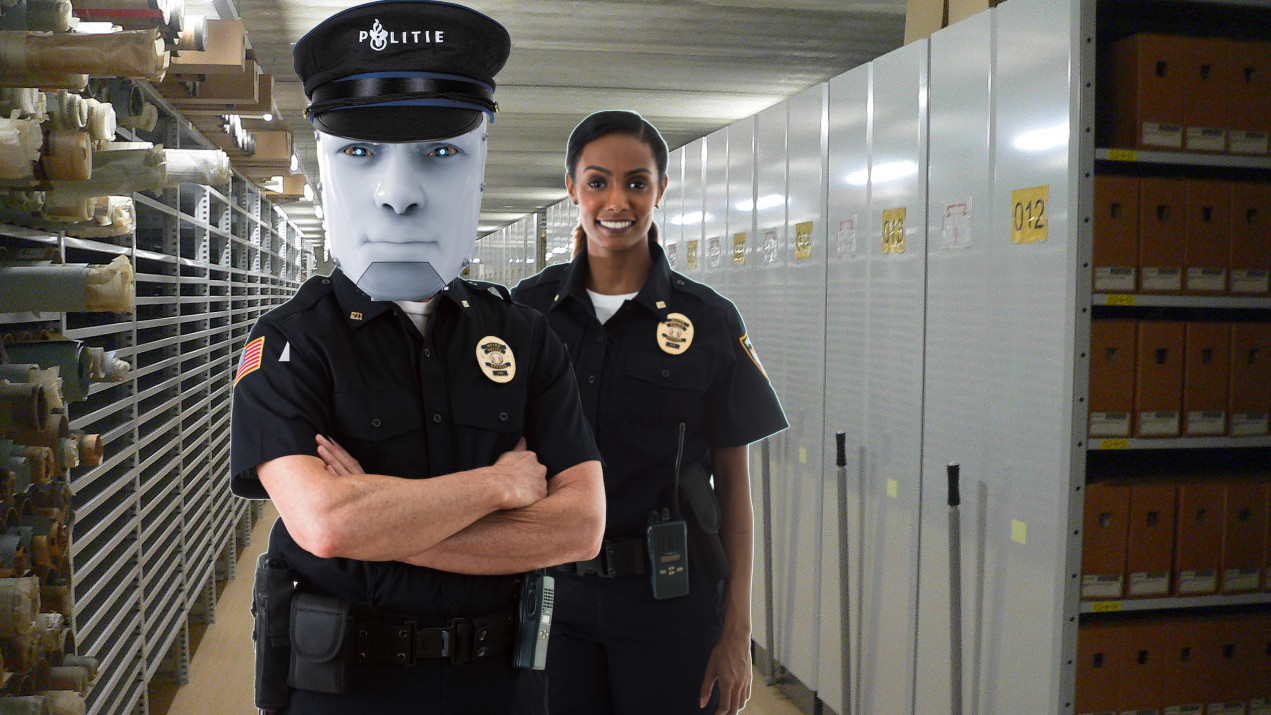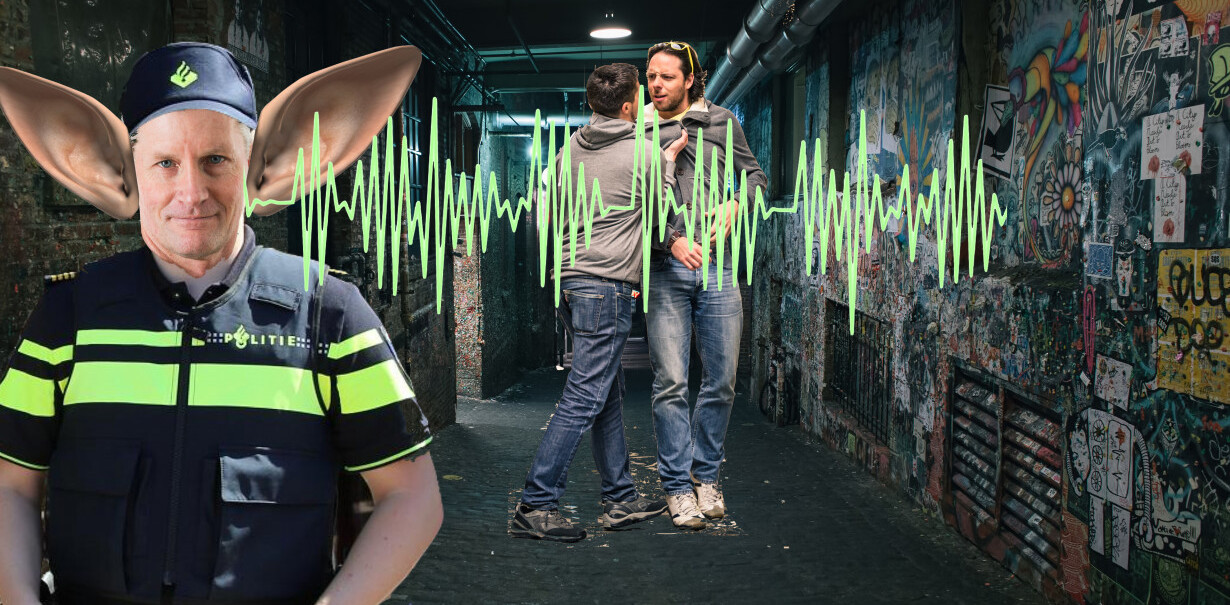
If the Dutch police would decide to solve all the cold cases in their archive today, just reading through the roughly 30 million sheets of paper would take them about a century.
Barring inventions of revolutionary life extension, most perpetrators, and probably the detectives themselves, would be dead by the time they got around to actually investigating them.
This is not ideal, to say the least.
A cold case, according to the definition the police gave me, is any case since 1988 that carries a jail sentence for over twelve years and has gone unsolved for at least three years.
“About one thousand of the fifteen hundred cold cases we identified are murders, which means that the perpetrator could still be out there – but more importantly, that relatives are left in uncertainty about what happened,” Roel Wolfert tells me.
Wolfert is a digital specialist who’s part of the founding team of Q, a division of the Dutch police that experiments with new approaches to old problems.
Q, which isn’t necessarily named after James Bond’s gadget supplier (yes, I asked), was started back in 2016. “The Q doesn’t really stand for anything,” founder Jeroen Hammer tells me. Their work, on the other hand, does.
The division started as a bottom-up movement within the police force to drive innovation, and now counts some 800 enthusiastic officers from different parts of the police. “We wanted to see how we could do things differently,” Hammer says.

Cold Case Calendar
Their first success came in the form of an app that helped officers standardize questioning of witnesses and victims around crime scenes. The team quickly followed this with a project they dubbed the ‘Cold Case Calendar.’
“That really put us on the map,” Hammer tells me. “During our training, we were allowed to intern with a police force abroad. I spent some time at the FBI in the US, where I visited different cold case teams.”
During one of those visits, he was taken to a penitentiary where inmates were given playing cards with short descriptions of cold cases on them. The hope was that inmates would talk amongst themselves, recognize the cases on the cards, and contact the police with leads.
“I thought that was a brilliant idea,” Hammer says. So he brought over the idea to the Netherlands, in a slightly different form. “My higher-ups were uncomfortable with the idea of inmates playing cards with victims faces on them, so we turned it into a calendar instead.”
“We know, but scientific research also shows, that many cold cases are solved in the end thanks to witness statements,” Wolfert chimes in. “Especially if there’s no link between a victim and a perpetrator, it’s extremely difficult to find them.”
Except if someone knows about that link. “The chance that people in jail talk among themselves and share information about past crimes, is pretty big.”
The calendar was a resounding success. After a small-scale pilot, it was shipped to penitentiaries all across the Netherlands and led to 78 tips, that helped progress 7 cases.
But that’s only one side of the story. “40% of reopened cold cases are because we got tips from witnesses who hadn’t come forward earlier. The rest are almost all solved thanks of new forensic techniques,” Hammer continues.
“We get lots of cold cases that couldn’t be solved back then, but now, because of things like DNA replication, they can.” Often, the DNA profile turns out to be somewhere in a police databank, and the suspect can be re-investigated.
Picking at random
There’s one big, glaring problem with this method though – they have no idea where to begin. Cold cases often consist of thousands of undigitized binders of pages, and “from the outside, there’s no way to tell what you’ll find inside.”
“At the moment we don’t know beforehand which case to go for,” Wolfert says. “When we don’t have tips from a witness or a DNA-match, we try to prioritize the most promising cold cases by ourselves. But we don’t have many other tools than the memories of police officers — sometimes retired — who can tell us that there might be a chance there was some missed evidence. Sometimes it feels as if we pick a cold case just as random.”
Once a case is picked, a forensic detective reads through the whole case looking at all the collected evidence. He or she checks when that evidence was last looked at, and if that was before important years like 1997, when the Dutch police opened their central DNA database.
This process takes up to a few weeks, after which the detective decides if the case should be re-examined or if it needs to be shelved pending technological development.
Luckily, this is where Q comes in.
“Cold cases are fertile ground for innovation because there’s nothing to lose,” Hammer says. “There are no big mistakes one can make, all we can do is maybe help move towards solving.”
“Paradoxically, there’s the fact that the older the case is, the bigger the chance we can solve it with newer technology.” This, of course, does depend on when the case was last opened, and if the evidence was preserved.
So he and his team started experimenting and quickly hit on the buzzwordiest of buzzwordy technologies: machine learning.
“We’re teaching the machine to do forensic screening,” Hammer tells me, not without a hint of pride. “The goal is that the AI can read cold cases we’re currently digitizing, and decide which ones contain promising evidence that could lead to solving the case.”

Golden hours
The AI would then rank cases by solvability, giving the forensic detectives a clearer view on where to focus their limited resources. This is a huge boon, especially for regional units that have less manpower to investigate cases from long ago.
Hammer and Wolfert have ambitious plans for the future. “We think we could have all the cold cases digitized in a year, and have a full list of prioritized cases in two years,” they tell me.
For now, the machine is focussing only on finding possible DNA evidence in cases, but Hammer is confident it can be used to recognize other forensic evidence as well. “And in the end, we might even be able to add in non-forensic data,” Wolfert adds, almost wistfully.
“We could add in social sciences and networks, witness statements, and all kinds of other non-forensic evidence,” he says. In the very best case, they believe that the system might even be useful for ‘hot cases.’
“In the so-called ‘golden hours’ right after a crime has taken place, the system might be able to point out which leads to pursue first based on similar cases. It could end up meaning a lot for the way we go about investigations.”
The technique is so new, the team is also looking for outside input. In the coming year, they’ll be organizing workshops for external developers to give them an idea of the data they’re working with, and hopefully finding new ways of analyzing them.
“Best case, we’d have a centralized database where police can see all the collected data, but also an API for external partners who want to participate in the investigation,” Hammer says, while also recognizing this would have to be done in a way that respects the privacy of victims and suspects.
“At the moment there are very few people who are doing this, and no one with cold cases, as far as I know,” Hammer tells me. “There are in fact police officers who have a yearly reminder in their Outlook calendar to call the national forensic institute to ask them if they have any new ways to analyze evidence.”
Their system could help detectives avoid this, by automatically re-priotizing cases that have a better chance at being solved thanks to new tech.
Humans still needed
Another expectation is that a self-learning system like this one will learn to spot other patterns. “We have about one thousand unsolved murders, but I don’t think there are one thousand murderers out there. I’m confident there are connections we haven’t been able to see with our bare eyes.”
“If you really think about it, detective work is just an algorithm; you follow certain steps that will lead to an outcome – balancing between randomness, biases, and real connections,” Wolfert told me as I was leaving. “But however good the AI becomes, human detectives will always be in the lead.”
As much crime has gone digital, the Dutch police now needs tech talent more than ever. Would you like to fight crime with code? Then find your future job here.
Get the TNW newsletter
Get the most important tech news in your inbox each week.





